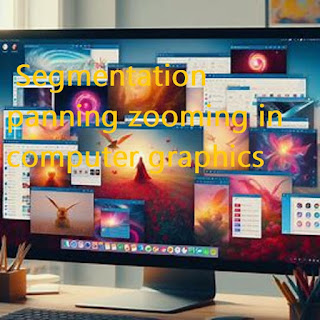Segmentation is the process of partitioning an image or scene into meaningful regions. It's a fundamental technique used for various tasks in computer graphics, such as:
- Object Recognition and Identification: By segmenting an image, we can identify individual objects and their boundaries. This is crucial for tasks like object tracking or image analysis.
- Image Editing and Manipulation: Segmentation allows us to isolate specific parts of an image for independent editing. You can apply different colors, textures, or transformations to distinct segments.
- 3D Scene Reconstruction: In 3D computer graphics, segmentation helps separate foreground objects from the background. This is a crucial step for creating realistic-looking scenes.
Panning refers to the horizontal swiveling of a camera from a fixed position. It's a common technique used in cinematography, photography, and videography to:
- Convey movement: By panning while following a moving subject, you can capture a sense of speed or motion blur in the background, emphasizing the subject's movement.
- Reveal information: Panning can gradually introduce new elements into the frame, unfolding a scene or environment for the viewer.
- Direct attention: You can use panning to guide the viewer's focus toward specific elements within the scene.
Zooming refers to the act of magnifying or de-magnifying a portion of an image or scene. It can be achieved in various ways, depending on the context:
In Photography and Videography:
- Lens Zoom: Cameras equipped with zoom lenses allow the user to adjust the focal length, effectively bringing a distant subject closer or a wide scene narrower. This is achieved by physically moving elements within the lens barrel.
- Digital Zoom: Some digital cameras offer digital zoom, which digitally crops the captured image to create a magnified view. However, this results in a loss of image quality compared to optical zoom.
Cinematography:
- Zoom Shot: In film and video production, zoom shots involve using a zoom lens to dynamically change the field of view (FOV). This can be used for:
- Focus Shifts: To dramatically shift focus from a background element to a foreground subject, creating a sense of anticipation or surprise.
- Revealing Details: To gradually zoom in on a specific area, revealing details that might have been missed otherwise.
- Creating Tension: Fast zooms can create a sense of urgency or suspense.
Computer Graphics:
- Software Zoom: In image editing software or 3D modeling applications, zooming allows users to magnify specific regions of interest for detailed work.




0 Comments